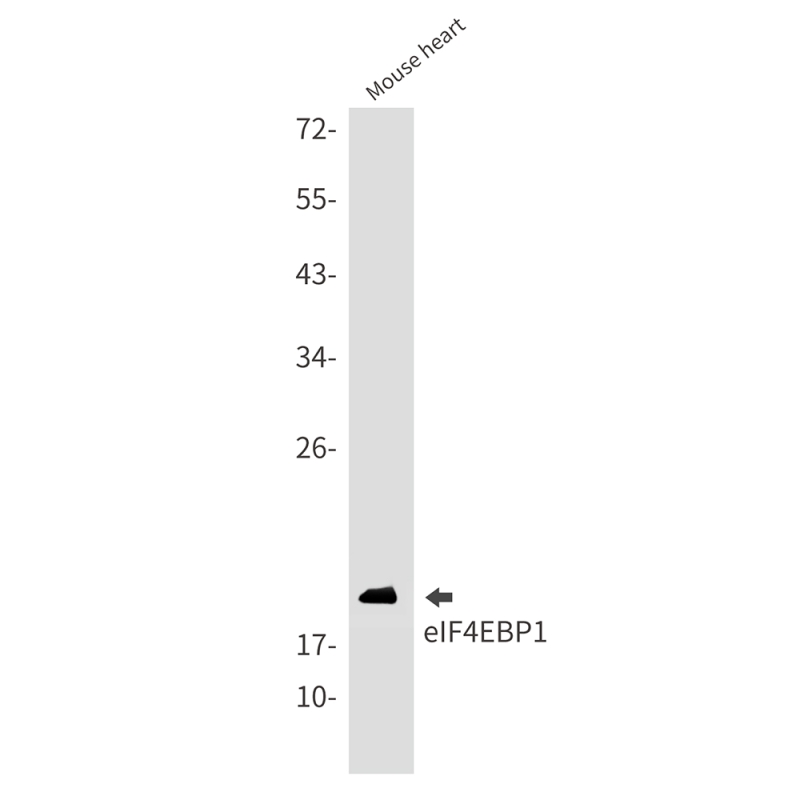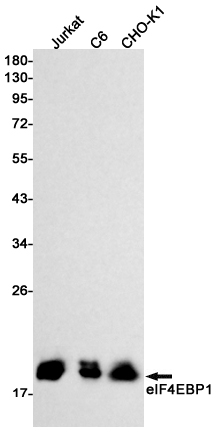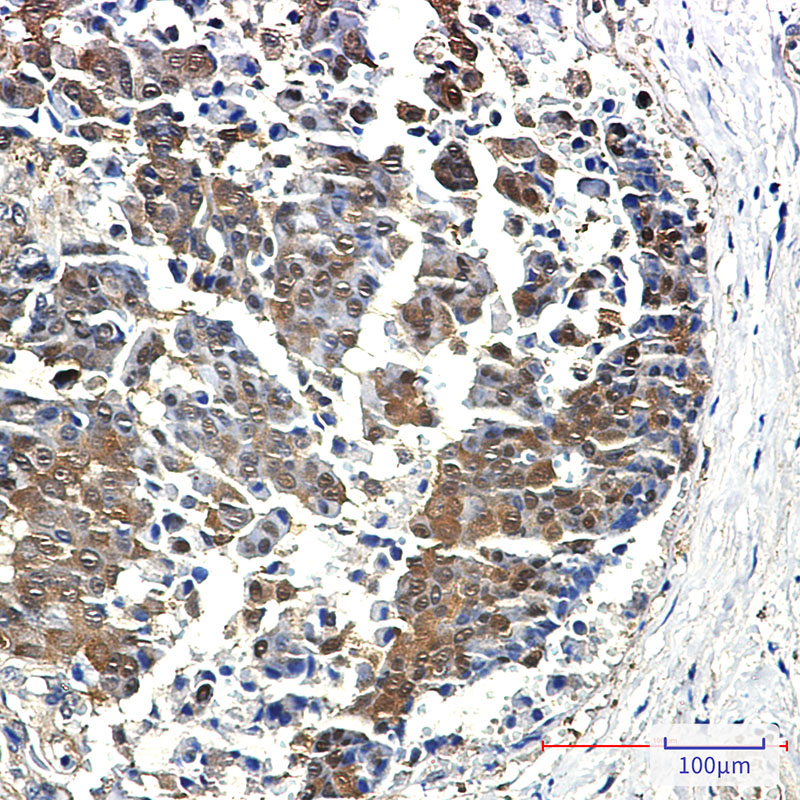


| WB | 1/500-1/1000 | Human,Mouse,Rat,Hamster |
| IF | 1/20 | Human,Mouse,Rat,Hamster |
| IHC | 1/50-1/100 | Human,Mouse,Rat,Hamster |
| ICC | 技术咨询 | Human,Mouse,Rat,Hamster |
| FCM | 咨询技术 | Human,Mouse,Rat,Hamster |
| Elisa | 咨询技术 | Human,Mouse,Rat,Hamster |
| Aliases | EIF4EBP1; Eukaryotic translation initiation factor 4E-binding protein 1; 4E-BP1; eIF4E-binding protein 1; Phosphorylated heat- and acid-stable protein regulated by insulin 1; PHAS-I |
| Entrez GeneID | 1978 |
| WB Predicted band size | Calculated MW: 13 kDa; Observed MW: 15-20 kDa |
| Host/Isotype | Rabbit IgG |
| Antibody Type | Primary antibody |
| Storage | Store at 4°C short term. Aliquot and store at -20°C long term. Avoid freeze/thaw cycles. |
| Species Reactivity | Human,Mouse,Rat,Hamster |
| Immunogen | A synthetic peptide of human eIF4EBP1 |
| Formulation | Purified antibody in TBS with 0.05% sodium azide,0.05%BSA and 50% glycerol. |
+ +
1. **文献名称**: "Regulation of 4E-BP1 phosphorylation: a novel two-step mechanism"
**作者**: Gingras AC, et al.
**摘要**: 该研究探讨了4E-BP1磷酸化的调控机制,通过使用特异性4E-BP1抗体进行免疫印迹分析,揭示了mTOR信号通路通过两步骤磷酸化调控4E-BP1的活性,从而影响其与eIF4E的结合能力。
2. **文献名称**: "mTOR-dependent regulation of eukaryotic translation initiation by 4E-BP1"
**作者**: Raught B, et al.
**摘要**: 本文利用4E-BP1抗体研究其在mTOR信号通路中的功能,发现氨基酸或生长因子刺激通过mTOR诱导4E-BP1磷酸化,解除其对翻译起始因子eIF4E的抑制,促进蛋白质合成。
3. **文献名称**: "The role of 4E-BP1 in cell growth and cancer: insights from knockout models"
**作者**: Fingar DC, et al.
**摘要**: 通过基因敲除模型和4E-BP1抗体的免疫检测,研究发现4E-BP1缺失导致细胞增殖失控和肿瘤形成,强调了其在抑制肿瘤发生中的关键作用及作为治疗靶点的潜力。
4. **文献名称**: "Phosphorylation dynamics of 4E-BP1 in response to cellular stress"
**作者**: Haghighat A, et al.
**摘要**: 研究使用4E-BP1抗体分析氧化应激和营养缺乏条件下蛋白磷酸化水平的变化,揭示了不同应激信号通过AMPK和mTOR通路差异调控4E-BP1的分子机制。
以上文献均涉及4E-BP1抗体的实验应用(如Western blot、磷酸化状态分析),并围绕其在翻译调控、细胞生长及疾病中的功能展开研究。
The 4E-BP1 (Eukaryotic Translation Initiation Factor 4E-Binding Protein 1) antibody is a critical tool for studying translational regulation and cellular growth control. 4E-BP1. a downstream target of the mTOR (mechanistic target of rapamycin) signaling pathway, acts as a suppressor of cap-dependent translation by binding to eIF4E, a key component of the translation initiation complex. Upon phosphorylation by mTORC1. 4E-BP1 releases eIF4E, enabling ribosome assembly and protein synthesis. This mechanism links nutrient availability, growth signals, and stress responses to cellular proliferation, making 4E-BP1 a focal point in cancer, metabolic disorders, and aging research.
Antibodies targeting 4E-BP1 are widely used to detect its expression and phosphorylation status (e.g., at Thr37/46 or Ser65 sites) via techniques like Western blotting, immunofluorescence, and immunoprecipitation. Phospho-specific antibodies help assess mTOR pathway activity, while pan-antibodies detect total protein levels. Researchers utilize these antibodies to study therapeutic responses to mTOR inhibitors (e.g., rapamycin), metabolic adaptations in diseases like diabetes, and oncogenic signaling in tumors. Variants such as hyperphosphorylated (inactive) and hypophosphorylated (active) forms of 4E-BP1 are often analyzed to evaluate pathway dysregulation. Commercial antibodies are typically validated for specificity across human, mouse, and rat models, ensuring broad experimental applicability. Their role in elucidating translation control mechanisms underscores their importance in both basic and translational biomedical research.
×